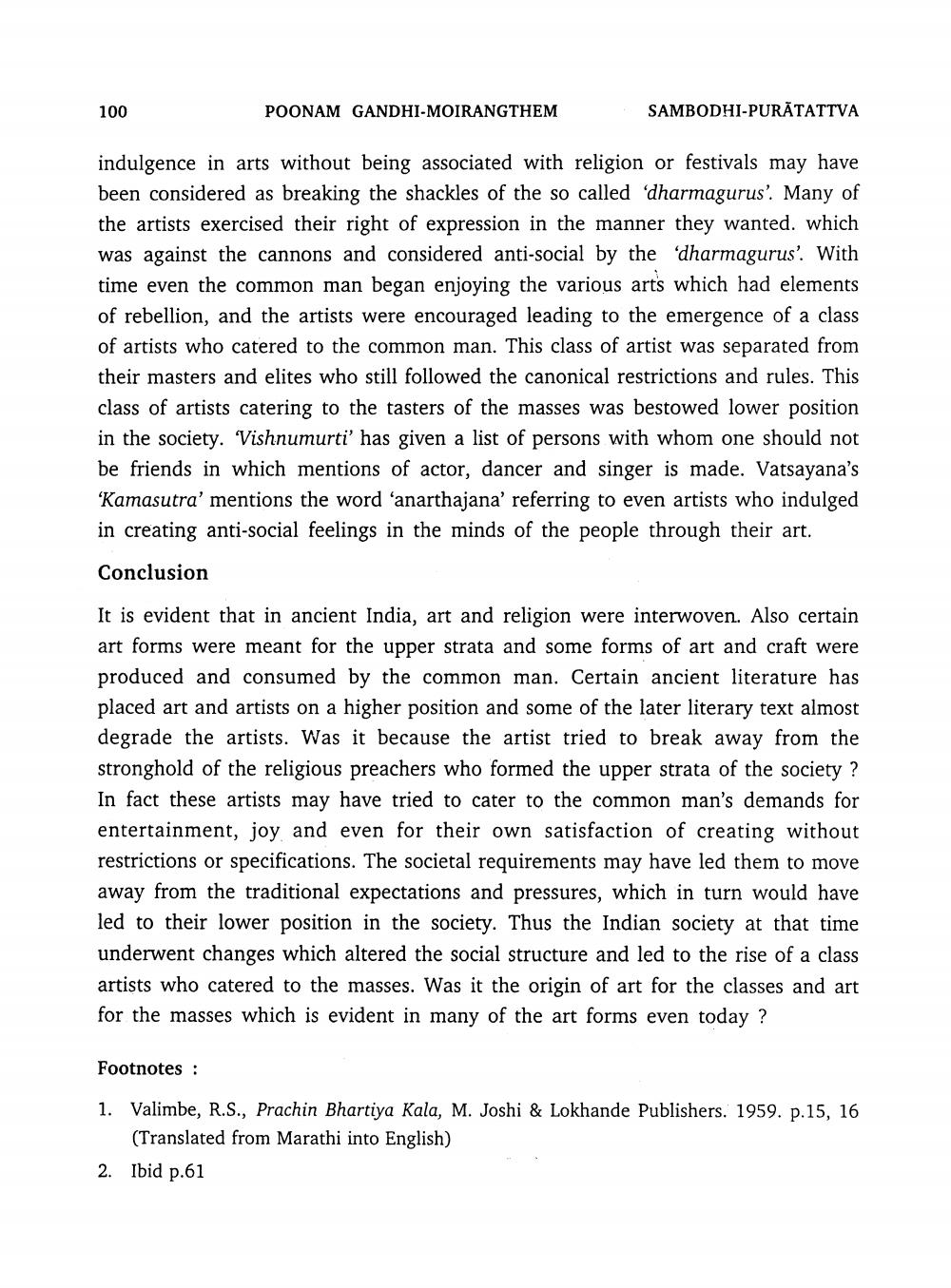________________
100
POONAM GANDHI-MOIRANGTHEM
SAMBODHI-PURĀTATTVA
indulgence in arts without being associated with religion or festivals may have been considered as breaking the shackles of the so called 'dharmagurus! Many of the artists exercised their right of expression in the manner they wanted. which was against the cannons and considered anti-social by the 'dharmagurus'. With time even the common man began enjoying the various arts which had elements of rebellion, and the artists were encouraged leading to the emergence of a class of artists who catered to the common man. This class of artist was separated from their masters and elites who still followed the canonical restrictions and rules. This class of artists catering to the tasters of the masses was bestowed lower position in the society. Vishnumurti' has given a list of persons with whom one should not be friends in which mentions of actor, dancer and singer is made. Vatsayana's Kamasutra' mentions the word 'anarthajana' referring to even artists who indulged in creating anti-social feelings in the minds of the people through their art.
Conclusion
It is evident that in ancient India, art and religion were interwoven. Also certain art forms were meant for the upper strata and some forms of art and craft were produced and consumed by the common man. Certain ancient literature has placed art and artists on a higher position and some of the later literary text almost degrade the artists. Was it because the artist tried to break away from the stronghold of the religious preachers who formed the upper strata of the society ? In fact these artists may have tried to cater to the common man's demands for entertainment, joy and even for their own satisfaction of creating without restrictions or specifications. The societal requirements may have led them to move away from the traditional expectations and pressures, which in turn would have led to their lower position in the society. Thus the Indian society at that time underwent changes which altered the social structure and led to the rise of a class artists who catered to the masses. Was it the origin of art for the classes and art for the masses which is evident in many of the art forms even today?
Footnotes :
1. Valimbe, R.S., Prachin Bhartiya Kala, M. Joshi & Lokhande Publishers. 1959. p.15, 16
(Translated from Marathi into English) 2. Ibid p.61




